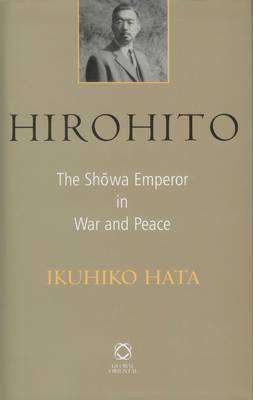
- Retrait gratuit dans votre magasin Club
- 7.000.000 titres dans notre catalogue
- Payer en toute sécurité
- Toujours un magasin près de chez vous
- Retrait gratuit dans votre magasin Club
- 7.000.0000 titres dans notre catalogue
- Payer en toute sécurité
- Toujours un magasin près de chez vous
180,45 €
+ 360 points
Description
This is a most important new work on Emperor Hirohito by one of Japan's leading historians, Ikuhiko Hata. Following the untimely death of Marius B. Jansen (Emeritus Professor, University of Princeton) in December 2000, who had been actively collaborating with the author and translator of the original Japanese edition (Hirohito Tenno itsutsu no ketsudan, first published in 1987 and republished in 1994), it was inevitable that there would be a delay in publication of the English edition, which is finally now available. In his extended Foreword as editor, referring to the nature of Hirohito's power, Jansen states: 'We are left with puzzles that will probably never be resolved. Clearly, as Professor Hata and others have shown, the Emperor Hirohito had immense power, but the condition of retaining it was judicious restraint in exercising it.' In offering a view on the merits of Hata's research, Jansen points to the hitherto unknown plots (in parallel but unrelated) by both the Army and Navy to preserve, and if necessary resuscitate, the imperial line in the event the victors decided to depose Hirohito. Jansen also points to the merits of Hata's particular focus on the contribution Hirohito made to Japan in its post-war relations with the United States. Jansen added substantive notes to help place the author's material in historical and historiographical perspective. The book, which is not a biography or a general history of the Showa era, focuses on five decisions taken by Emperor Hirohito, which the author considers the key turning points of his reign: these concern the 26 February 1936 insurrection of young army officers, the termination of the Pacific War, the post-war constitution, the issue of abdication and the San Francisco Peace Treaty.
Spécifications
Parties prenantes
- Auteur(s) :
- Editeur:
Contenu
- Nombre de pages :
- 300
- Langue:
- Anglais
Caractéristiques
- EAN:
- 9781905246359
- Date de parution :
- 01-08-07
- Format:
- Livre relié
- Format numérique:
- Genaaid
- Dimensions :
- 225 mm x 148 mm
- Poids :
- 508 g

Les avis
Nous publions uniquement les avis qui respectent les conditions requises. Consultez nos conditions pour les avis.






